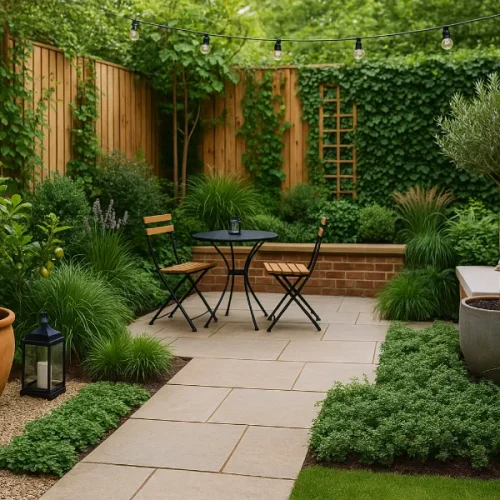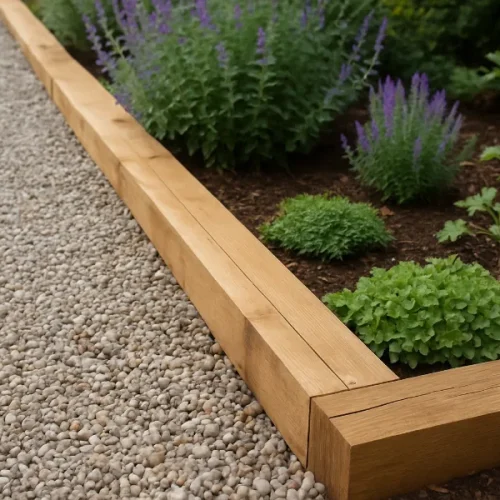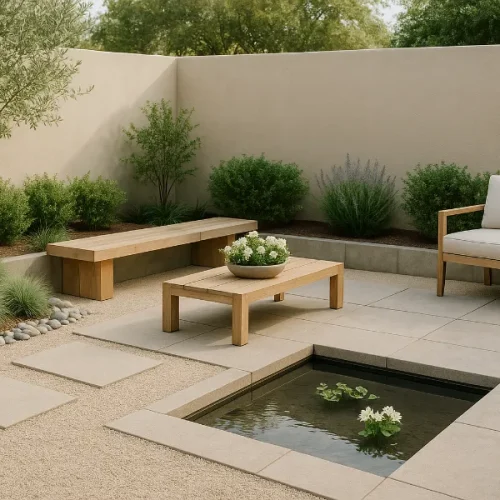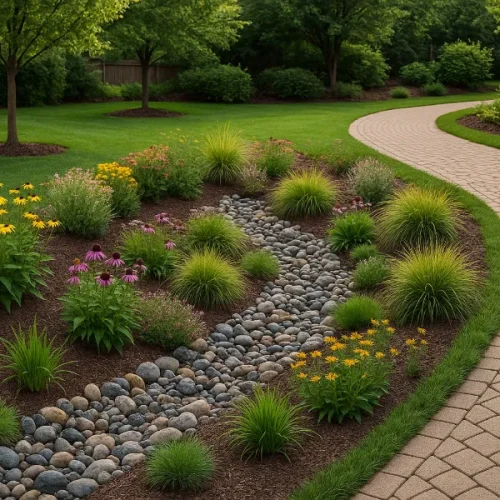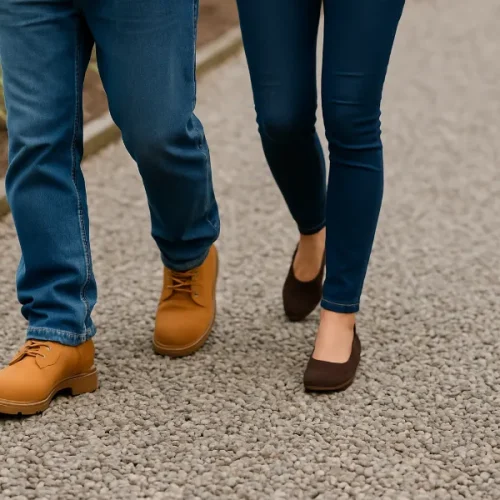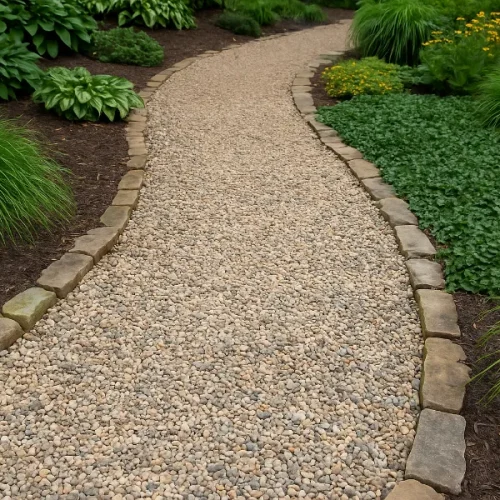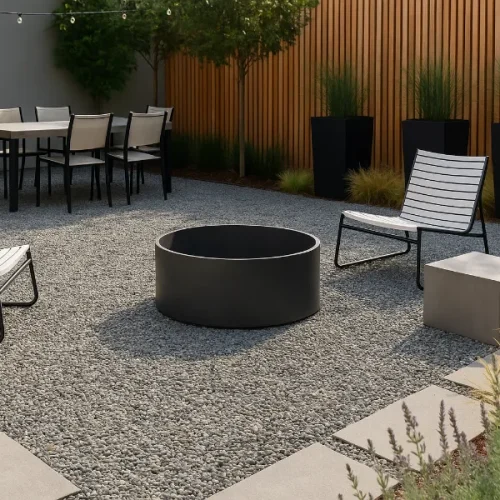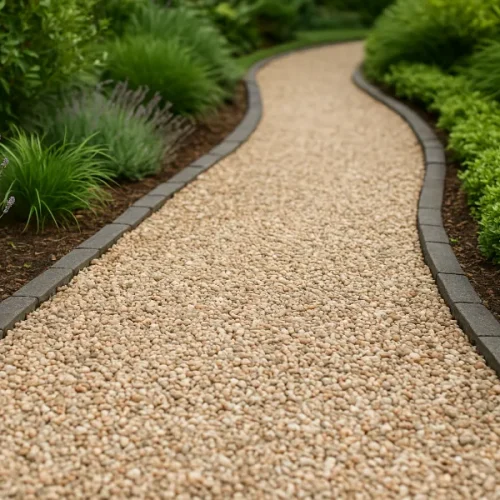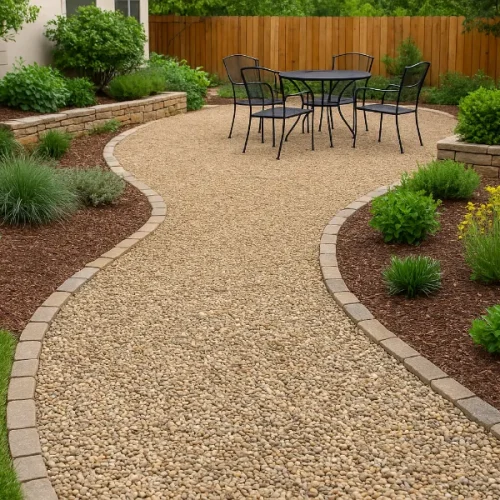
Rustic outdoor seating area design embraces a feeling of grounded ease and natural warmth. It’s the kind of environment where sunlight filters through tree branches, where the wood feels real beneath your fingertips, and where seating invites lingering conversation rather than rushed cups of coffee. The rustic look is timeless because it connects people to the outdoors in a direct, honest way. It reminds us of cabins near forests, homes on wide stretches of land, and evenings spent around a crackling fire. But you don’t need an actual cabin or acres of property to create a rustic outdoor seating area. With thoughtful choices in materials, layout, and mood-building details, any patio, garden, balcony, or backyard nook can become a comfortable rustic retreat.
To design this kind of space, start by thinking about tone. Rustic does not mean outdated or rough to the point of discomfort. Instead, rustic is about rich textures, sturdy forms, and natural materials that feel welcoming. Picture broad wooden beams, woven seating, textured stone, warm earthy colors, soft lantern light, and greenery that feels like it could have been growing there for decades. These are the grounding elements of the style. As you build from those foundations, personalization brings character: handmade pottery, vintage textiles, weathered metal accents, and one-of-a-kind pieces with history behind them. Rustic outdoor seating areas don’t feel artificial or staged—they feel collected, lived-in, and deeply personal.
Start with the Setting
Before choosing furniture or décor, decide where the seating area will live. A rustic environment benefits from proximity to natural elements, even if those elements are curated. A corner near shade trees, a patio bordered by low shrubs, a spot with views of flowers or open yard—these settings create a natural sense of enclosure and comfort. If your yard is more minimal or urban, consider using planters, tall grasses, bamboo screens, or wood trellises to create the illusion of nature gently shaping the space.
The ground surface is a major character-setting element. Gravel, stone pavers, flagstone, reclaimed brick, decomposed granite, or rough paver tiles all suit the rustic style. They feel grounded and visually textured. Wooden decks can also work well, especially if the wood has a matte finish rather than high gloss. Weathered, faded, or reclaimed wood is best, as it contributes a lived-in atmosphere. If you’re working with plain concrete, you can soften it with woven outdoor rugs, natural fiber mats, or ground-covering potted plants.
Choosing Materials
Rustic design favors materials that age gracefully. Wood turns silver in sunlight and softens with time. Stone grows smoother and more familiar underfoot. Metal develops natural patina. These signs of wear are not flaws—they’re proof of life. If you’d like to explore how rustic building traditions developed historically, the concept is connected to broader rustic architecture, which you can learn more about here: https://en.wikipedia.org/wiki/Rustic_architecture
Wood, stone, metal, and natural textiles function as the building blocks of a rustic seating area:
· Wood: Reclaimed timber, cedar, pine, teak, or live-edge slabs for tables and benches.
· Stone: Fieldstone borders, slate pavers, stacked stone fire pit walls.
· Metal: Iron lanterns, bronze accents, weathered steel fire bowls.
· Textiles: Canvas, jute, cotton, and wool blends in quiet, earthy tones.
The rustic aesthetic blends well with durable modern outdoor fabrics as long as the colors and textures remain grounded in nature.
Furniture: Comfort First
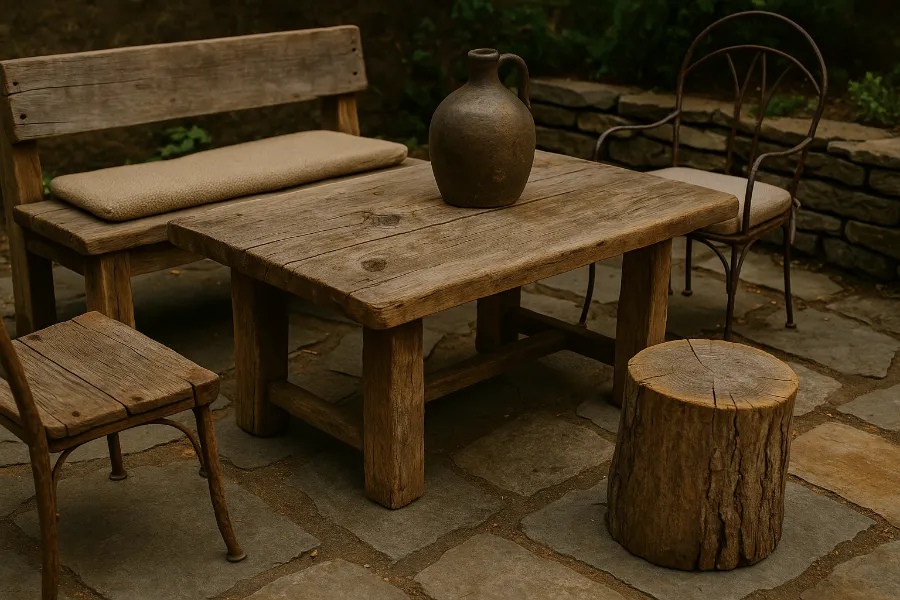
Rustic seating invites you to linger. Seating should feel supportive, solid, and friendly to the body for long stretches of conversation.
· Adirondack chairs for slanted lounging
· Deep outdoor sofas with thick cushions
· Long picnic tables for family meals
· Benches carved from reclaimed beams or logs
· Stump stools and natural log side tables
Low seating encourages relaxation. Clustered floor cushions or padded poufs around a low table near a fire pit creates a mood of simplicity and connection.
Shade and Enclosure
Rustic spaces feel intimate rather than exposed. Pergolas, ramadas, tree-filtered shade, or overhead reed mats provide shelter from harsh sunlight. For privacy, consider rustic fencing panels, woven screens, reclaimed shutters, or tall plant groupings. Vines like jasmine, honeysuckle, or wisteria climbing up wooden supports add softness and seasonal beauty.
The Fire Element
A fire feature creates a focal point and encourages conversation. Stone fire pits, chimineas, metal fire bowls, or propane fire tables all fit rustic aesthetics. Always consult local fire guidelines and ensure proper clearance from overhead structures and vegetation.
Lighting: The Mood Maker

Once daylight fades, lighting defines the atmosphere. Warm, low lighting is best.
· String lights with warm white bulbs
· Candle lanterns (real or LED flicker candles)
· Iron or copper sconces mounted on wood posts
· Solar lights along pathways
Avoid cool-toned bright LED lighting, which disrupts the natural, evening calm.
Plants and Greenery
Plants are not accessories—they’re part of the environment’s heartbeat. Rustic spaces feel more alive when plants are layered in height, texture, and scent. For guidance on selecting regionally appropriate plants, refer to the USDA Forest Service Native Plant Guide.
Choose plants that feel organic rather than overly manicured:
· Lavender, rosemary, sage, and thyme
· Ferns, hostas, grasses, and wildflowers
· Climbing vines for pergolas and entryways
· Olive trees, citrus, or bay laurel in oversized clay planters
Clustered plantings feel more authentic than single pots scattered around.
Color Palette and Textures
Rustic color palettes draw from the earth:
· Warm browns and honey wood tones
· Stone gray, muted terracotta, river rock beige
· Faded greens like olive, moss, and sage
· Soft creams, sand, charcoal, and linen white
Texture matters more than pattern. Focus on grain, weave, patina, and hand-finished surfaces.
Personal Touches
Rustic design thrives on character:
· A handmade quilt on a bench
· A basket of blankets for cool evenings
· Rough pottery mugs hanging near the fire pit
· Driftwood, antlers, handmade bowls, or heirloom pieces
· Lanterns that look like they’ve weathered decades
Rustic design celebrates imperfection as beauty.
Final Thoughts
A rustic outdoor seating area is a sanctuary not a showpiece. It encourages slow mornings, unhurried meals, late night conversations, and quiet reflection. Natural materials, warm lighting, greenery, and comfortable seating form the foundation, while your personal history and creativity breathe personality into the space.
When done well, the setting will feel timeless, grounded, and welcoming—like a place that has always been waiting for you to sit down and stay awhile.
If you’d like, I can now:
• Create image prompts for this article (Pinterest-friendly)
• Generate a title list, keyword list, or slug suggestions
• Expand this into a printable moodboard or material selection guide
FAQs
Natural materials like wood, stone, and woven textiles create the warm, earthy look associated with rustic style.
No. A balcony, porch, or small patio can feel rustic with thoughtful material and furniture choices.
Wooden benches, Adirondack chairs, deep-cushion sofas, and reclaimed or natural wood tables suit the style well.
They don’t have to be. Many rustic elements, like reclaimed wood and simple planters, can be budget-friendly.
Earth tones such as warm browns, greens, beiges, stone gray, and muted natural hues work best.
Pergolas, shade cloths, tree-filtered shade, and vine-covered structures create natural cooling and enclosure.
Yes, as long as the lighting has a warm tone. Lanterns, string lights, and soft sconces enhance the rustic feel.
Herbs, ornamental grasses, ferns, native shrubs, and climbing vines help create a natural and grounded atmosphere.
Not required, but fire elements add warmth, gathering energy, and visual focus to the space.
Apply protective sealants to wood, wipe down textiles, and store cushions during harsh weather to extend life.


